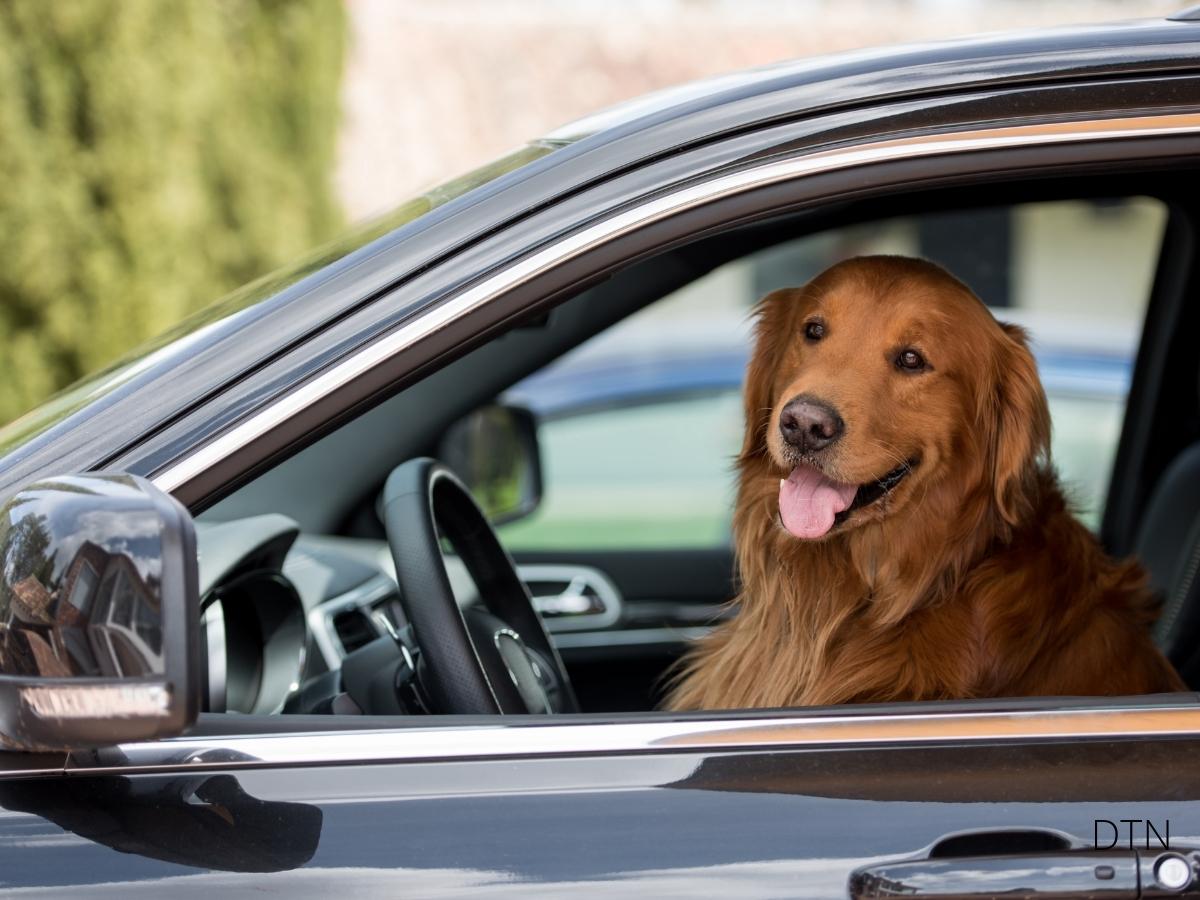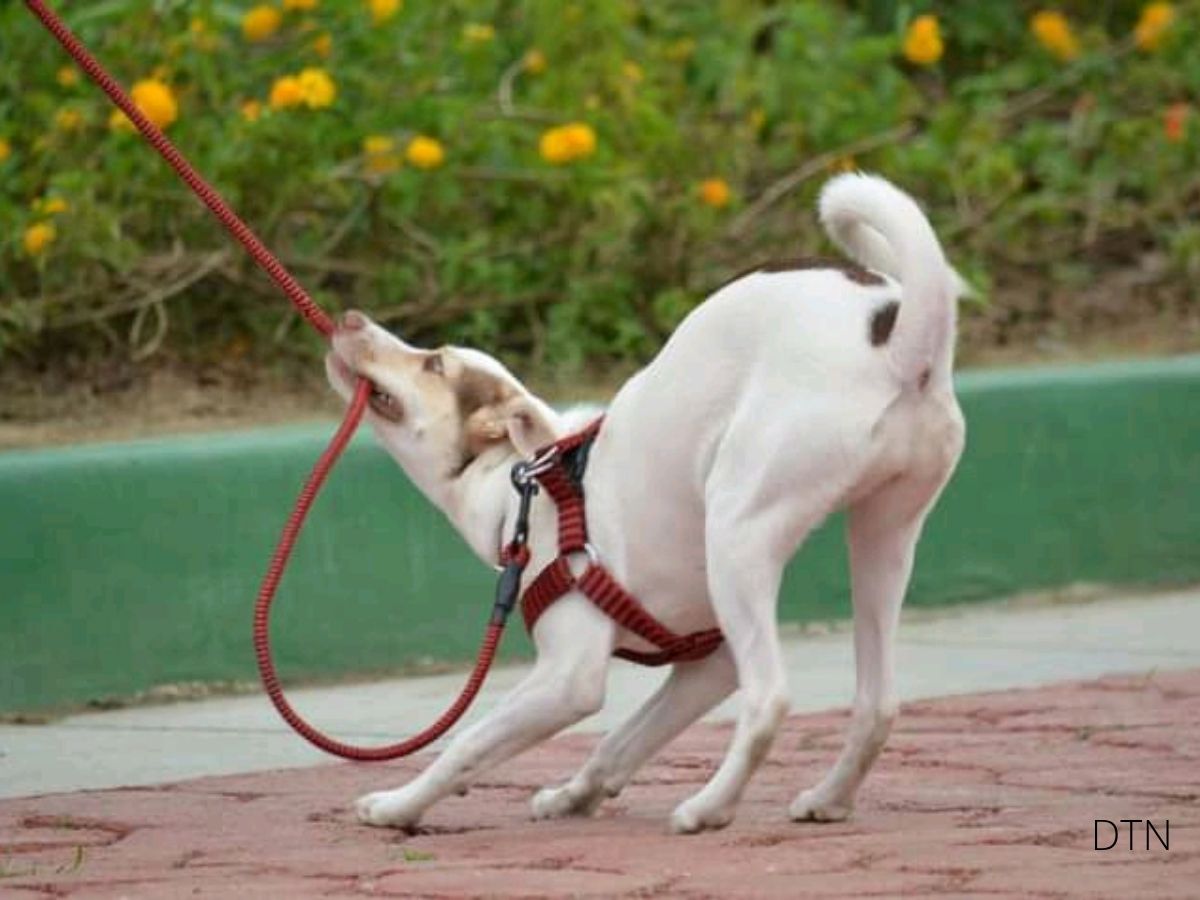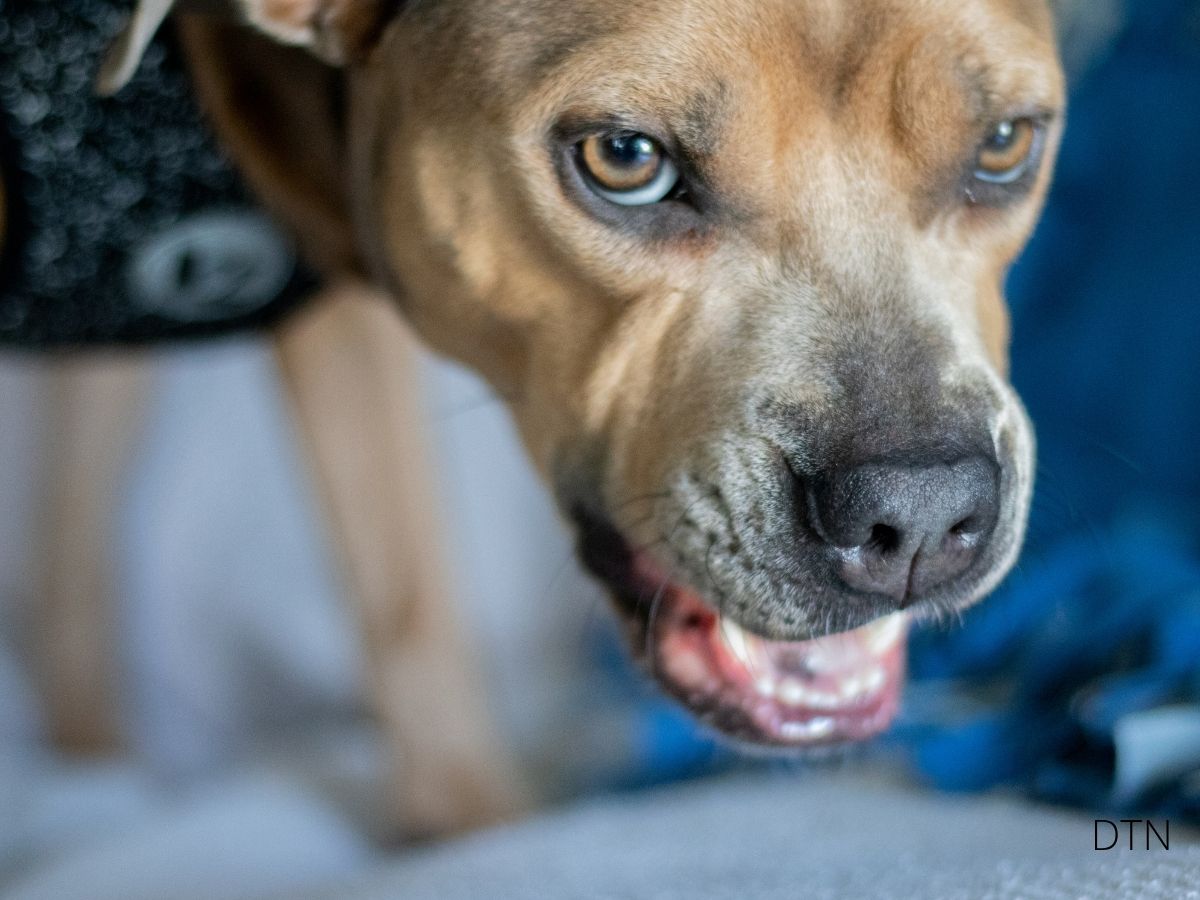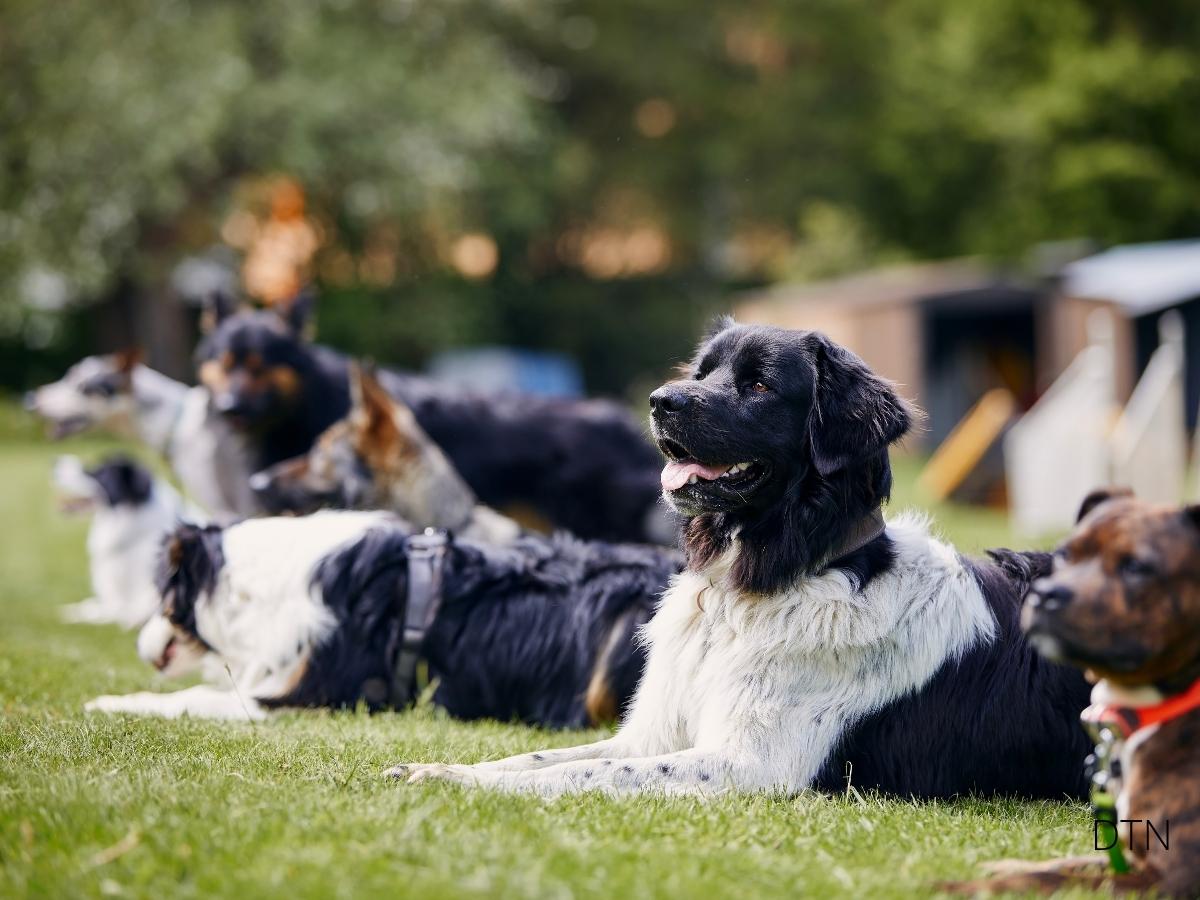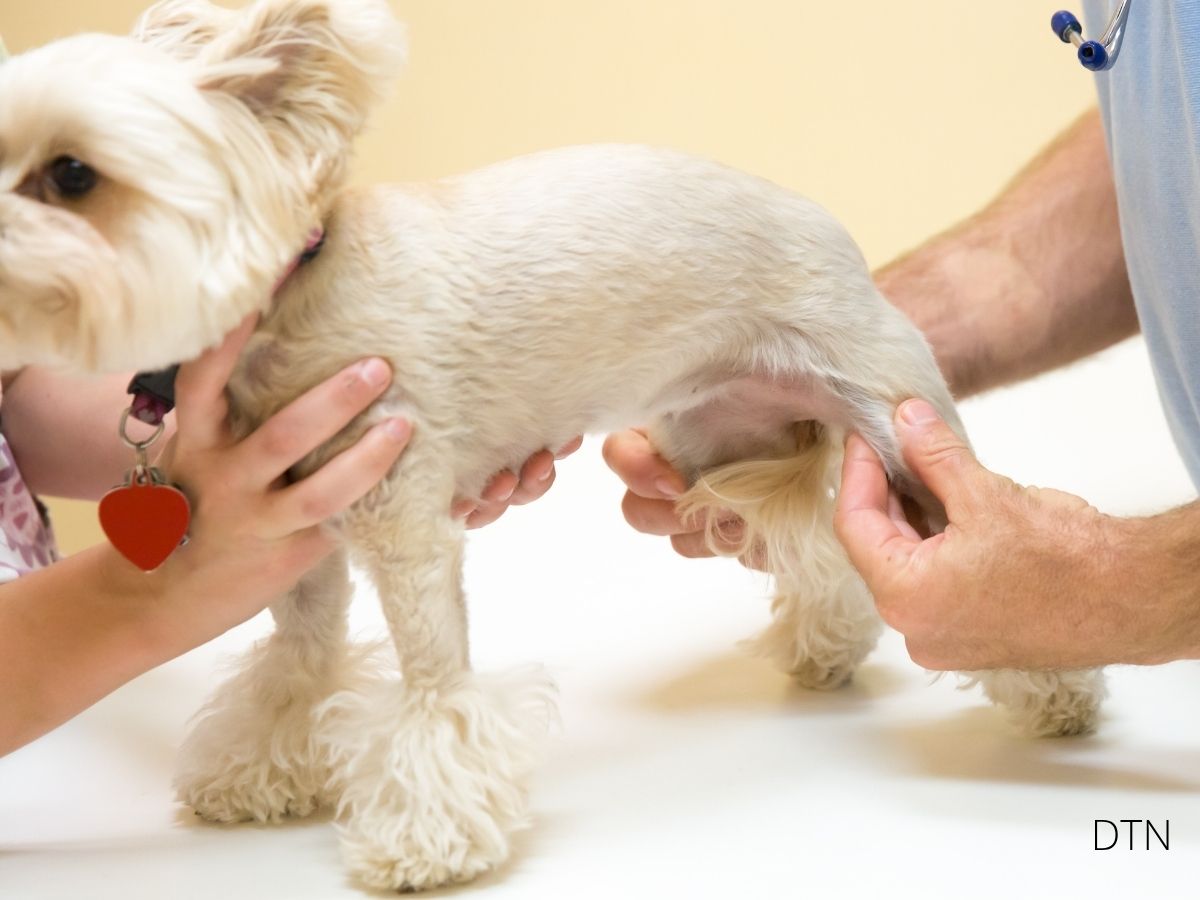Picture this: you’re excited about a weekend adventure with your furry friend, but just minutes into the drive, your dog starts drooling, whining, and looking utterly miserable. If this sounds familiar, you’re not alone—car sickness affects countless dogs and their families, turning what should be joyful journeys into stressful ordeals. Let us guide you through understanding this common condition and discovering practical solutions that can transform your pup’s travel experience.
Motion sickness in dogs isn’t just an inconvenience; it’s a genuine welfare concern that can limit your dog’s access to veterinary care, socialization opportunities, and family adventures. The good news? With the right understanding and approach, most dogs can overcome or significantly improve their tolerance to car travel. Whether you’re dealing with a puppy experiencing their first car rides or an adult dog with established travel anxiety, this comprehensive guide will equip you with the knowledge and strategies you need.
The Science Behind Motion Sickness: What’s Happening Inside Your Dog
Understanding the Vestibular System
Your dog’s inner ear contains a remarkable balance system called the vestibular apparatus—think of it as nature’s gyroscope. This delicate system constantly sends signals to the brain about your dog’s position and movement. When your car accelerates, turns, or stops, these fluid-filled chambers detect every motion. In dogs prone to car sickness, this system becomes hypersensitive, triggering a cascade of uncomfortable symptoms.
The sensory conflict at play: Here’s where things get complicated for your pup. While their inner ear detects motion, their eyes might be focused on the static interior of your car—perhaps watching you in the driver’s seat or staring at the back of a headrest. This mismatch between what they see and what they feel creates what scientists call “sensory conflict,” the primary driver of motion sickness symptoms.
Neurological pathways involved: When this conflict occurs, signals travel through specific neural pathways to the chemoreceptor trigger zone in the brain—essentially the “nausea control center.” This area, located outside the blood-brain barrier, is particularly sensitive to conflicting sensory information. Once activated, it triggers the familiar symptoms we associate with car sickness: drooling, nausea, and eventually, vomiting.
Did you know that puppies and younger dogs often experience more severe motion sickness? Their vestibular systems are still developing, making them particularly vulnerable to sensory conflicts. The good news is that many dogs naturally outgrow the worst of their car sickness as their balance systems mature—though some continue to need support throughout their lives. 🐾
The Brain-Gut Connection
Motion sickness isn’t just “in your dog’s head”—it involves a complex interaction between the nervous system and digestive tract. When the brain receives conflicting sensory signals, it activates the vagus nerve, which directly connects to the stomach and intestines. This activation explains why gastrointestinal symptoms like nausea and vomiting are so prominent in motion-sick dogs.
Stress hormones amplify the response: Your dog’s emotional state plays a crucial role too. When they anticipate an unpleasant car ride, their body releases stress hormones like cortisol and adrenaline. These hormones can sensitize the digestive system, making nausea more likely to occur even before significant motion begins.
Individual sensitivity varies: Just as some humans are more prone to seasickness, individual dogs show varying susceptibility to motion sickness. This sensitivity appears to be influenced by genetics, early experiences, and even breed characteristics—though research into breed-specific predispositions remains limited.
Recognizing the Signs: Beyond the Obvious
Physical Symptoms You Can’t Miss
When most people think of car sickness, vomiting comes to mind first. But your dog will likely show several warning signs before reaching that point. Learning to recognize these early indicators can help you intervene before symptoms escalate.
Early warning signs include:
- Excessive drooling or lip licking
- Repeated yawning (not from tiredness)
- Restlessness or inability to settle
- Trembling or shaking
- Whining or unusual vocalizations
Progressive symptoms as sickness intensifies: As motion sickness worsens, you might notice your dog becoming increasingly lethargic or, conversely, more agitated. Some dogs will pace constantly if space allows, while others freeze in place with a rigid posture. Heavy panting—even in cool temperatures—often accompanies these middle-stage symptoms.
The vomiting threshold: By the time your dog vomits, they’ve endured significant discomfort. Multiple episodes of vomiting during a single trip indicate severe motion sickness that requires immediate attention and long-term management strategies.
Behavioral Manifestations: Reading Between the Lines
Not all signs of car sickness are purely physical. Dogs communicate distress through behavior, and understanding these signals helps you differentiate between motion sickness and travel anxiety—though the two often overlap.
Anticipatory behaviors: Does your dog hide when they see you grab the car keys? Do they resist getting into the vehicle or need to be carried? These anticipatory behaviors suggest your dog has formed negative associations with car travel, possibly due to previous motion sickness experiences.
In-car behavioral changes: During travel, watch for excessive panting (beyond normal temperature regulation), attempts to hide under seats, pressing against car doors, or fixating on windows. Some dogs will vocalize continuously—not just whining but sometimes barking or howling in distress.
Post-travel effects: The impact doesn’t always end when the car stops. Dogs severely affected by motion sickness might remain subdued for hours after travel, refuse meals, or show reluctance to engage in normal activities. These lingering effects indicate the significant toll that motion sickness takes on your dog’s well-being.
You might notice that your dog’s symptoms vary between trips. Factors like trip duration, road conditions, time since their last meal, and even your own stress levels can influence symptom severity. This variability is completely normal and actually provides valuable clues for developing an effective management strategy. 🧡
To his dog, every man is Napoleon; hence the constant popularity of dogs.
– Aldous Huxley
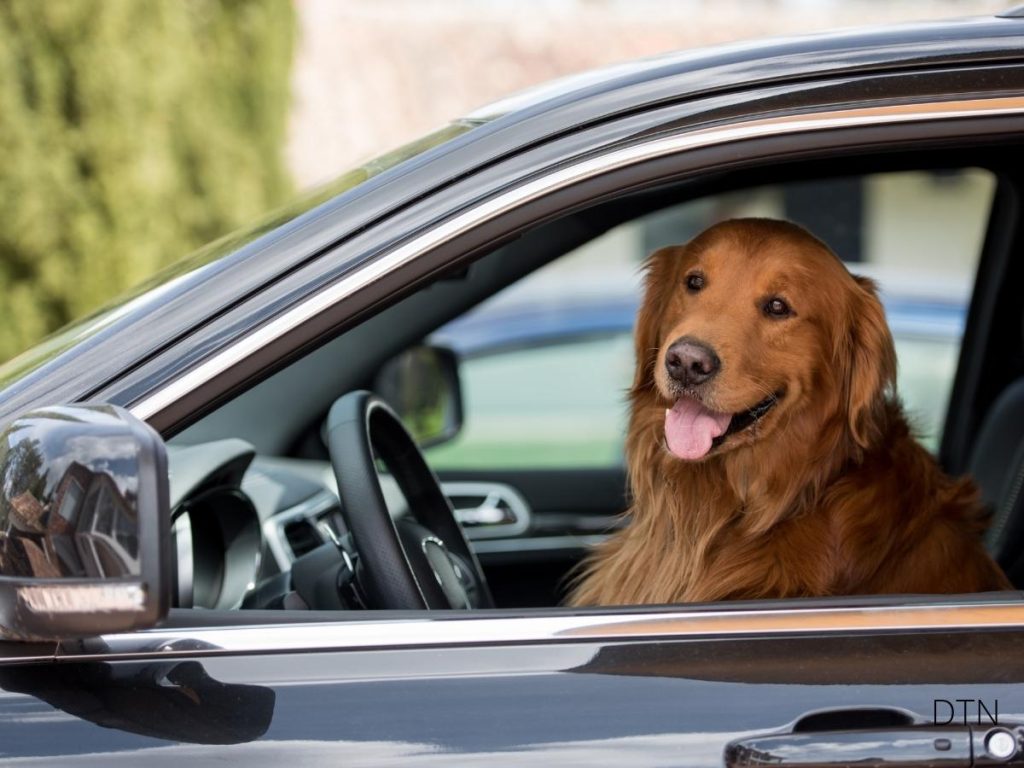
The Anxiety Factor: When Fear Makes Everything Worse
Understanding Conditioned Responses
Here’s where psychology meets physiology in fascinating ways. Through classical conditioning—the same process Pavlov discovered with his famous dogs—your pup can develop learned responses to car travel that compound or even mimic motion sickness symptoms.
How conditioning develops: After just one or two episodes of car sickness, your dog’s brain begins forming powerful associations. The sight of your car, the sound of the engine starting, even the smell of car upholstery can trigger anticipatory nausea. This means your dog might start feeling sick before any motion occurs.
The stress spiral effect: Once these associations form, a destructive cycle begins. Anxiety about potential sickness increases stress hormones, which sensitize the digestive system, making actual motion sickness more likely. This confirmed negative experience strengthens the conditioning, creating an ever-worsening spiral.
Breaking the cycle requires patience: The good news? These conditioned responses can be modified through systematic desensitization and counter-conditioning. By creating new, positive associations with car travel, you can help your dog’s brain rewire its automatic responses.
Your Energy Matters More Than You Think
Dogs are remarkably attuned to human emotions—they read our body language, vocal tones, and even detect chemical changes in our scent when we’re stressed. Your emotional state before and during car travel significantly influences your dog’s experience.
Mirror neurons at work: When you’re anxious about your dog getting sick, you unconsciously tense up, breathe differently, and move in ways that signal danger to your dog. Their mirror neurons—cells that fire both when performing an action and observing it—pick up on these subtle cues, amplifying their own stress response.
Creating calm through intention: Conversely, when you approach car travel with genuine calm confidence, your dog receives reassuring signals that help regulate their nervous system. This doesn’t mean forcing fake cheerfulness, but rather cultivating genuine ease through preparation and trust in your management plan.
Environmental Factors: Setting Up for Success
Vehicle Dynamics and Design Considerations
The type of vehicle you drive, where your dog sits, and how they’re secured all influence motion sickness severity. Understanding these factors helps you optimize your setup for maximum comfort.
Motion dynamics vary by vehicle: Larger vehicles with softer suspensions create different motion patterns than compact cars with sport-tuned handling. SUVs and minivans often provide a smoother ride with less abrupt acceleration and deceleration. If possible, test different vehicles to see if your dog tolerates one better than another.
Seating position matters immensely: Dogs positioned where they can see the horizon through front or side windows experience less sensory conflict. The worst spot? Facing backward or being unable to see outside at all. The back of SUVs or station wagons, especially over the rear axle, experiences more motion and should be avoided for sensitive dogs.
Restraint systems influence comfort: While safety should always be the priority, the type of restraint affects your dog’s motion sickness. Rigid crates that slide or shift can worsen symptoms, while well-fitted harnesses that allow some natural body movement often work better. The key is finding the balance between safety and allowing your dog to adjust their position slightly with the car’s movement.
Sensory Environment Optimization
Beyond physical positioning, the sensory environment inside your vehicle plays a crucial role in your dog’s comfort. Small adjustments can make significant differences.
Visual input modifications: Encouraging your dog to look forward or out windows reduces sensory conflict. Some dogs benefit from elevated seating (using proper booster seats designed for dogs) that allows them to see the road ahead. Others do better with controlled visual input—using window shades to limit peripheral motion while maintaining forward visibility.
Temperature and ventilation considerations: Cool, fresh air helps many dogs manage nausea. Crack windows slightly for air circulation, use air conditioning to maintain comfortable temperatures, and avoid strong air fresheners or perfumes that might trigger nausea. Some dogs benefit from directed air vents providing gentle airflow across their face.
Acoustic environment impacts: Road noise, music volume, and even conversation can affect sensitive dogs. Some find classical music or specially designed dog-calming music helpful, while others prefer quiet. Pay attention to what your individual dog responds to best.
Did you know that even the route you choose affects your dog’s comfort? Highways with steady speeds are often easier to tolerate than stop-and-go city driving or winding mountain roads. When possible, plan routes that minimize sharp turns, sudden stops, and elevation changes. 🚗
Medical Interventions: When Professional Help is Needed
Pharmaceutical Options and Considerations
When behavioral and environmental modifications aren’t enough, pharmaceutical interventions can provide crucial relief. Modern veterinary medicine offers several effective options, each with specific benefits and considerations.
Anti-emetics – The first line of defense: Medications like maropitant (Cerenia) work by blocking specific receptors in the chemoreceptor trigger zone, preventing nausea and vomiting. These medications are highly effective for most dogs and are specifically approved for preventing motion sickness. They’re typically given 2-3 hours before travel and can provide relief for 24 hours.
Antihistamines – Dual action benefits: Certain antihistamines not only help with motion sickness but also provide mild sedation that can ease anxiety. Medications like diphenhydramine (Benadryl) or dimenhydrinate (Dramamine) work for some dogs, though they’re generally less effective than prescription anti-emetics. The sedating effect can be helpful or problematic depending on your goals.
Anxiety medications for complex cases: When anxiety significantly contributes to car sickness, your veterinarian might recommend anti-anxiety medications like trazodone or gabapentin. These don’t directly address motion sickness but can break the anxiety-nausea cycle. Some dogs benefit from combination therapy using both anti-emetics and anxiety medications.
Important safety considerations: Never give human motion sickness medications without veterinary guidance. Dosing differs significantly between humans and dogs, and some ingredients safe for humans are toxic to dogs. Always discuss your dog’s complete medical history, as certain conditions or medications may contraindicate motion sickness treatments.
Natural and Complementary Approaches
Many pet parents prefer to try natural remedies before or alongside pharmaceutical options. While scientific evidence for these approaches in dogs is limited, some show promise based on human studies and anecdotal reports.
Ginger – Ancient remedy with modern applications: Ginger has well-documented anti-nausea properties in humans and appears safe for dogs in appropriate doses. Fresh ginger root, ginger treats designed for dogs, or ginger supplements might help mild cases. Start with small amounts to ensure your dog tolerates it well.
Adaptogenic herbs and calming supplements: Products containing L-theanine (from green tea), chamomile, or valerian root may help reduce travel anxiety. While they don’t directly address motion sickness, reducing overall stress can improve your dog’s travel experience. These work best when given regularly, not just before travel.
Pheromone therapy – Chemical communication: Synthetic pheromone products (like Adaptil) mimic the calming pheromones mother dogs produce. Available as sprays, diffusers, or collars, these can help reduce travel anxiety. While not a cure for motion sickness, they’re a useful part of a comprehensive management strategy.
Acupressure and massage techniques: Certain acupressure points may help with nausea. The P6 point (located on the inner foreleg) is used in humans for motion sickness. Gentle massage before and during travel can also help reduce overall tension and anxiety.
Remember, natural doesn’t always mean safe or effective. Always consult your veterinarian before trying new supplements or remedies, especially if your dog takes other medications or has health conditions. What works wonderfully for one dog might be ineffective or problematic for another. 🌿
Behavioral Modification: Rewiring the Travel Experience
Systematic Desensitization Protocols
Changing your dog’s emotional response to car travel requires patience, consistency, and a systematic approach. This process, called desensitization and counter-conditioning, gradually exposes your dog to car travel while creating positive associations.
Phase 1: Stationary car comfort (Days 1-7): Start with the car parked and engine off. Feed special treats or meals in the stationary car. Play favorite games around and in the vehicle. Let your dog explore at their own pace, rewarding calm, relaxed behavior. Some dogs need several sessions just to approach the car calmly.
Phase 2: Engine running, no movement (Days 8-14): Once your dog happily enters the stationary car, progress to having the engine running. Start with just a few seconds, gradually increasing duration. Continue high-value rewards and fun activities. If your dog shows stress, you’re moving too fast—go back to the previous step.
Phase 3: Minimal movement (Days 15-21): Begin with backing out of the driveway and immediately returning. Progress to short trips around the block. Keep sessions brief and positive—better to do three successful 2-minute sessions than one stressful 10-minute trip.
Phase 4: Gradual distance increases (Days 22+): Slowly extend trip duration and distance. Include positive destinations like parks or friends’ houses—not just vet visits. Monitor your dog’s comfort level constantly and be prepared to shorten trips if needed.
Critical success factors: Never push through obvious distress signals. If your dog vomits or shows severe anxiety, you’ve moved too quickly. Go back several steps and proceed more slowly. This isn’t a race—taking months to build positive associations is better than reinforcing negative ones through rushed training.
Creating Positive Associations
Beyond systematic desensitization, actively building positive connections with car travel accelerates progress and maintains long-term success.
The “car means awesome things” principle: Reserve extra-special treats or toys exclusively for car travel. These should be items your dog absolutely loves but doesn’t get any other time. This creates anticipation and excitement rather than dread.
Destination training: Make most car trips lead to wonderful experiences. Visit dog-friendly stores, parks, or friends’ houses. The ratio should be at least 3-4 positive destinations for every potentially stressful one (like vet visits). Your dog learns that cars predict good things, not just medical procedures.
Calm settling exercises: Teach your dog to perform calming behaviors in the car. Practice “settle” or “relax” commands during stationary sessions, then gradually incorporate them during travel. Deep pressure therapy (like a snug-fitting anxiety wrap) can help some dogs achieve calm faster.
Managing Setbacks and Plateaus
Progress isn’t always linear, and setbacks are normal parts of the learning process. How you handle these challenges determines long-term success.
Common setback triggers: Changes in routine, negative experiences (like emergency vet visits), or even seasonal factors can cause regression. Recognize that this is temporary and avoid becoming discouraged. Your dog isn’t being “difficult”—they’re responding to stress or confusion.
Plateau management strategies: When progress stalls, resist the urge to push harder. Instead, consolidate current achievements by practicing at the comfortable level for longer. Sometimes, taking a complete break from car training for a week allows stress hormones to normalize and learning to consolidate.
Emergency travel protocols: Sometimes you must travel before training is complete. Have an emergency plan: use prescribed medications if available, keep trips minimal, and do damage control afterward with extra positive sessions at earlier training stages.
You might notice your dog progresses quickly through some phases but struggles with others. This is completely normal—every dog has their own learning curve. Celebrate small victories and remember that even tiny improvements add up to significant changes over time. 😊
Dogs are miracles with paws.
– Susan Ariel Rainbow Kennedy
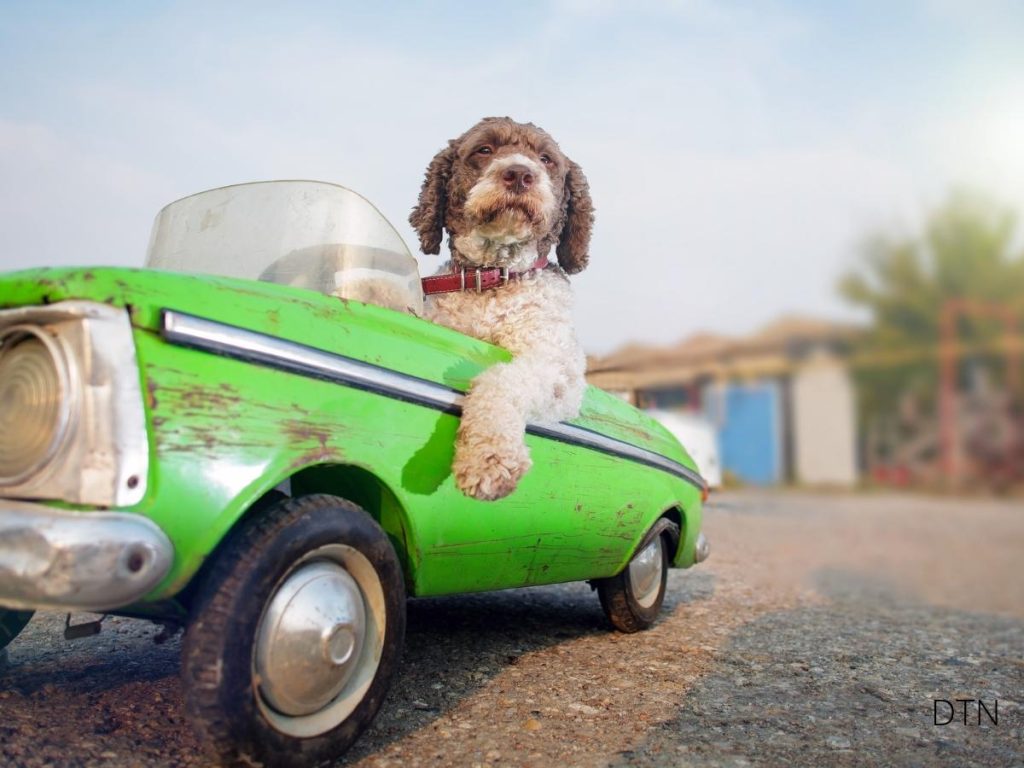
Practical Management Strategies for Real Life
Pre-Travel Preparation Routines
A consistent preparation routine helps your dog anticipate and prepare for car travel, reducing anxiety and physical discomfort.
Timing meals strategically: Feed your dog 3-4 hours before travel to allow digestion while preventing empty-stomach nausea. Avoid feeding during the hour before departure. For longer trips, pack small, bland snacks rather than full meals.
Exercise before, not after: A moderate walk or play session 30-60 minutes before travel helps burn excess energy and promotes calm. Avoid vigorous exercise immediately before, as this can actually increase nausea susceptibility.
Bathroom breaks are essential: Ensure your dog has thoroughly emptied their bladder and bowels before traveling. The discomfort of needing to eliminate can compound motion sickness symptoms.
Calming rituals that work: Develop a consistent pre-travel routine that signals calm preparation time. This might include gentle brushing, massage, or quiet time with a favorite toy. Keep your energy calm and confident during these preparations.
During-Travel Best Practices
Once you’re on the road, specific strategies can help maintain your dog’s comfort and prevent symptom escalation.
Strategic stopping points: For longer journeys, plan stops every 30-60 minutes initially, extending as your dog’s tolerance improves. These aren’t just bathroom breaks—they’re opportunities for your dog to reset their vestibular system and relieve any building nausea.
Distraction techniques that help: Some dogs benefit from gentle interaction during travel—soft talking, light petting (if safe), or puzzle toys can redirect attention from motion sensations. Others prefer minimal interaction. Learn what works for your individual dog.
Reading early warning signs: Watch for subtle changes in breathing patterns, lip licking, or restlessness. These early indicators let you intervene before symptoms worsen—perhaps stopping for a break or opening windows for fresh air.
Driver behavior matters: Smooth driving significantly impacts your dog’s comfort. Gradual acceleration and braking, gentle turns, and maintaining steady speeds reduce motion sickness triggers. If possible, avoid reading maps or looking at phones while stopped—even these stationary visual conflicts can trigger symptoms in sensitive dogs.
Post-Travel Recovery Protocols
How you handle the post-travel period influences future travel experiences and your dog’s recovery time.
Immediate post-travel care: Allow your dog to rest in a quiet, comfortable space. Offer small amounts of water frequently rather than letting them drink large quantities at once. Wait at least 30 minutes before offering food, starting with small, bland portions.
Positive reinforcement timing: Reward calm behavior after exiting the vehicle, but avoid excessive excitement that might trigger delayed nausea. Save energetic praise and play for after your dog has fully recovered.
Monitoring for delayed reactions: Some dogs experience delayed symptoms, showing signs of nausea or discomfort hours after travel ends. Keep activities low-key for the remainder of the day after significant car travel.
Record keeping for pattern recognition: Maintain a simple log noting trip duration, symptoms observed, interventions used, and recovery time. This data helps identify patterns and optimize your management strategy. You might discover specific triggers or successful interventions you hadn’t noticed before.
Special Considerations: Puppies, Seniors, and Special Needs
Puppy-Specific Approaches
Puppies require special consideration due to their developing vestibular systems and the critical importance of early experiences.
Early intervention is key: Starting positive car experiences before 12 weeks of age—during the critical socialization period—can prevent motion sickness from becoming a chronic issue. Even if your puppy shows signs of car sickness, gentle, positive exposure helps build tolerance.
Shorter, more frequent sessions: Puppies benefit from multiple brief exposures rather than longer trips. Think minutes, not hours. Five positive 3-minute experiences are more valuable than one stressful 15-minute trip.
Growth and development considerations: Many puppies naturally outgrow motion sickness as their vestibular systems mature, typically by 12-18 months. However, negative experiences during this developmental period can create lasting anxiety that persists even after physical symptoms resolve.
Senior Dogs and Changing Needs
Older dogs may develop motion sickness even if they traveled well when younger, or their existing car sickness might worsen with age.
Age-related sensory changes: Declining vision or hearing can increase sensory conflict during travel. Cognitive changes might also affect their ability to anticipate and adjust to motion. Be patient with new or worsening symptoms in senior dogs.
Medication considerations: Senior dogs often take multiple medications that might interact with motion sickness treatments. They may also be more sensitive to side effects. Work closely with your veterinarian to find safe, effective options.
Comfort modifications: Older dogs benefit from extra cushioning, easier car entry/exit (using ramps or steps), and more frequent breaks. Arthritis or other mobility issues can make maintaining balance during travel more challenging, potentially triggering or worsening motion sickness.
Medical Conditions That Complicate Management
Certain health conditions require modified approaches to managing car sickness.
Vestibular disease: Dogs with vestibular disease (often seen in older dogs) have compromised balance systems, making them extremely susceptible to motion sickness. These dogs need extra-gentle handling, minimal travel, and close veterinary supervision.
Anxiety disorders: Dogs with generalized anxiety disorders often experience more severe car sickness due to the anxiety component. These cases typically require comprehensive behavior modification combined with anti-anxiety medications for successful management.
Gastrointestinal conditions: Dogs with inflammatory bowel disease, chronic gastritis, or other GI conditions may have lower thresholds for nausea. Work with your veterinarian to optimize their underlying condition before addressing motion sickness.
Brachycephalic breeds: Flat-faced breeds like Bulldogs and Pugs may experience respiratory distress during travel stress, complicating motion sickness management. These dogs need excellent ventilation, temperature control, and careful monitoring.
Remember, every dog is unique. What works beautifully for your neighbor’s Golden Retriever might not suit your Chihuahua. Be patient, observant, and willing to adjust your approach based on your individual dog’s needs. 🐾
Long-Term Success: Maintaining Progress and Quality of Life
Building Resilience Over Time
Successfully managing car sickness isn’t just about eliminating symptoms—it’s about building your dog’s overall resilience to travel stress.
Gradual challenge increases: Once your dog consistently tolerates short trips, gradually introduce mild challenges: different vehicles, new routes, or varying weather conditions. This builds adaptability and confidence.
Maintenance training matters: Even after achieving success, periodic positive car experiences maintain your dog’s comfort level. Don’t let months pass between car trips, or you might need to rebuild tolerance.
Celebrating milestones: Acknowledge progress, no matter how small. Did your dog enter the car willingly for the first time? Make it through a 10-minute trip without drooling? These victories deserve recognition and reinforce your commitment to the process.
When to Seek Specialist Help
Sometimes, despite your best efforts, professional intervention becomes necessary.
Veterinary behaviorist referral indicators: If you’ve tried systematic desensitization for 2-3 months without progress, or if your dog’s reactions are becoming more severe, a board-certified veterinary behaviorist can provide specialized assessment and treatment plans.
Medical reevaluation needs: Sudden onset of motion sickness in a previously good traveler, or worsening symptoms despite treatment, warrants thorough veterinary examination. Underlying medical conditions might be contributing factors.
Alternative transportation considerations: For some dogs, despite all interventions, car travel remains severely distressing. In these cases, exploring alternatives—like mobile veterinarians, pet taxi services with specialized vehicles, or even mild sedation for essential travel—might be necessary for their welfare.
The Bigger Picture: Impact on Human-Animal Bond
Managing your dog’s car sickness successfully does more than just make travel easier—it strengthens your relationship and improves overall quality of life.
Trust building through support: When you patiently help your dog through their car sickness, you demonstrate trustworthiness and reliability. Your dog learns that you won’t force them into overwhelming situations and will support them through challenges.
Expanded life experiences: Overcoming car sickness opens doors to adventures, social opportunities, and enrichment activities that would otherwise be inaccessible. This variety contributes to your dog’s mental stimulation and emotional well-being.
Reduced family stress: When car travel becomes manageable, the entire family benefits. No more arguing about who stays home with the dog, rushing through errands, or feeling guilty about leaving them behind.
Conclusion: Your Journey Forward
Car sickness in dogs is a complex condition involving physiological, psychological, and environmental factors. But as we’ve explored throughout this guide, it’s also a highly manageable condition with the right understanding and approach.
The key takeaways to remember:
- Motion sickness stems from sensory conflict between visual and vestibular input, but anxiety and conditioning often amplify symptoms
- Early intervention and positive associations can prevent minor car sickness from becoming a chronic problem
- A combination of environmental modifications, behavioral training, and (when necessary) medical interventions provides the best outcomes
- Every dog’s journey is unique—what matters is finding the right combination of strategies for your individual pup
- Progress isn’t always linear, but with patience and consistency, most dogs can achieve significant improvement
Whether you’re just beginning to address your dog’s car sickness or you’ve been working on it for months, remember that seeking help isn’t giving up—it’s advocating for your dog’s welfare. Your veterinarian, certified dog trainers, and veterinary behaviorists are valuable partners in this journey.
Most importantly, approach this challenge with compassion—for your dog and yourself. Car sickness isn’t anyone’s fault, and managing it successfully takes time, patience, and sometimes trial and error. But the reward—a dog who can comfortably join you on life’s adventures—makes every effort worthwhile.
Your furry friend depends on you to help them navigate this challenge. With the knowledge you’ve gained from this guide, you’re now equipped to transform car travel from a source of distress into an opportunity for bonding and adventure. Here’s to many happy, comfortable miles ahead with your beloved companion! 🧡
Resources and Next Steps
Ready to put this knowledge into action? Start with these practical first steps:
- Assess your dog’s current status: Use the symptom checklist to identify where your dog falls on the motion sickness spectrum
- Create your management plan: Based on severity, choose 2-3 strategies to implement first
- Schedule a veterinary consultation: Discuss medical options and rule out underlying conditions
- Begin documentation: Start your travel log to track patterns and progress
- Connect with support: Join online communities of pet parents dealing with similar challenges
Remember, you’re not alone in this journey. With dedication, the right strategies, and professional support when needed, you can help your dog overcome their travel troubles and enjoy the adventures that await you both.


